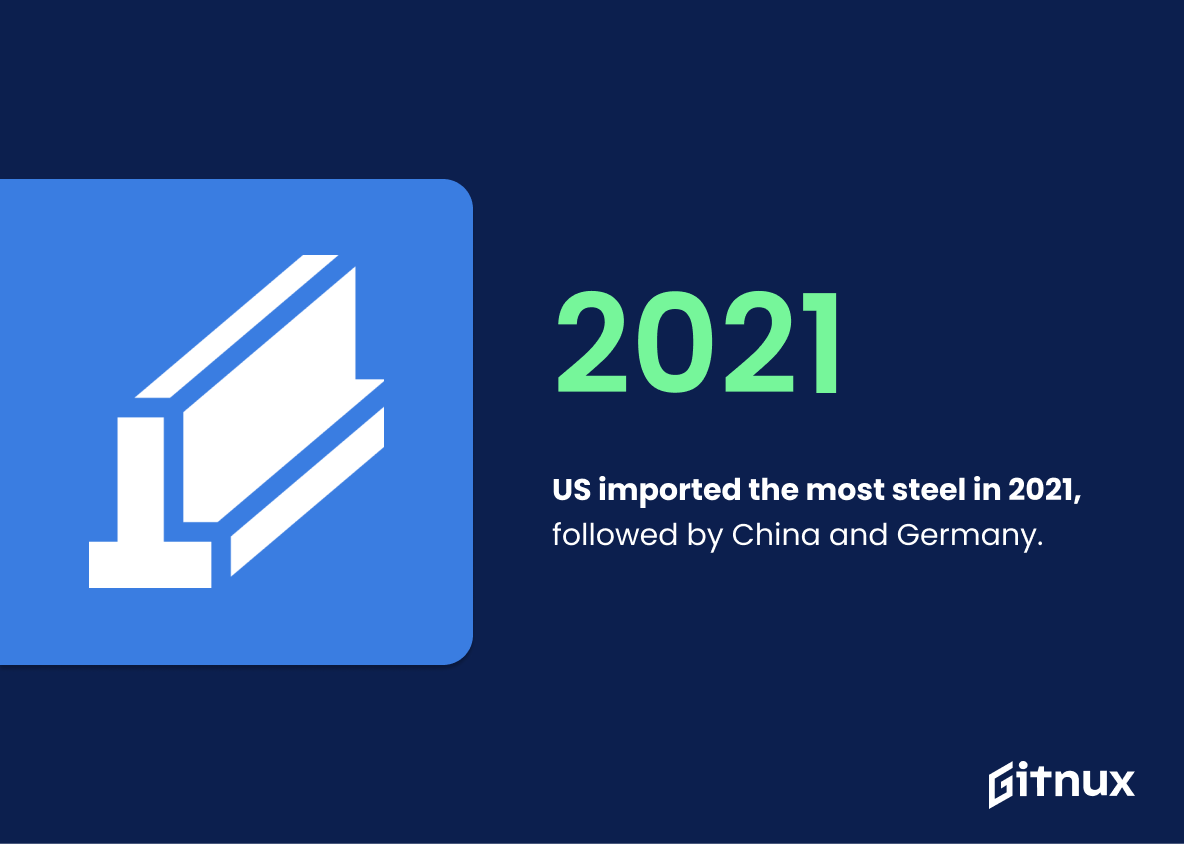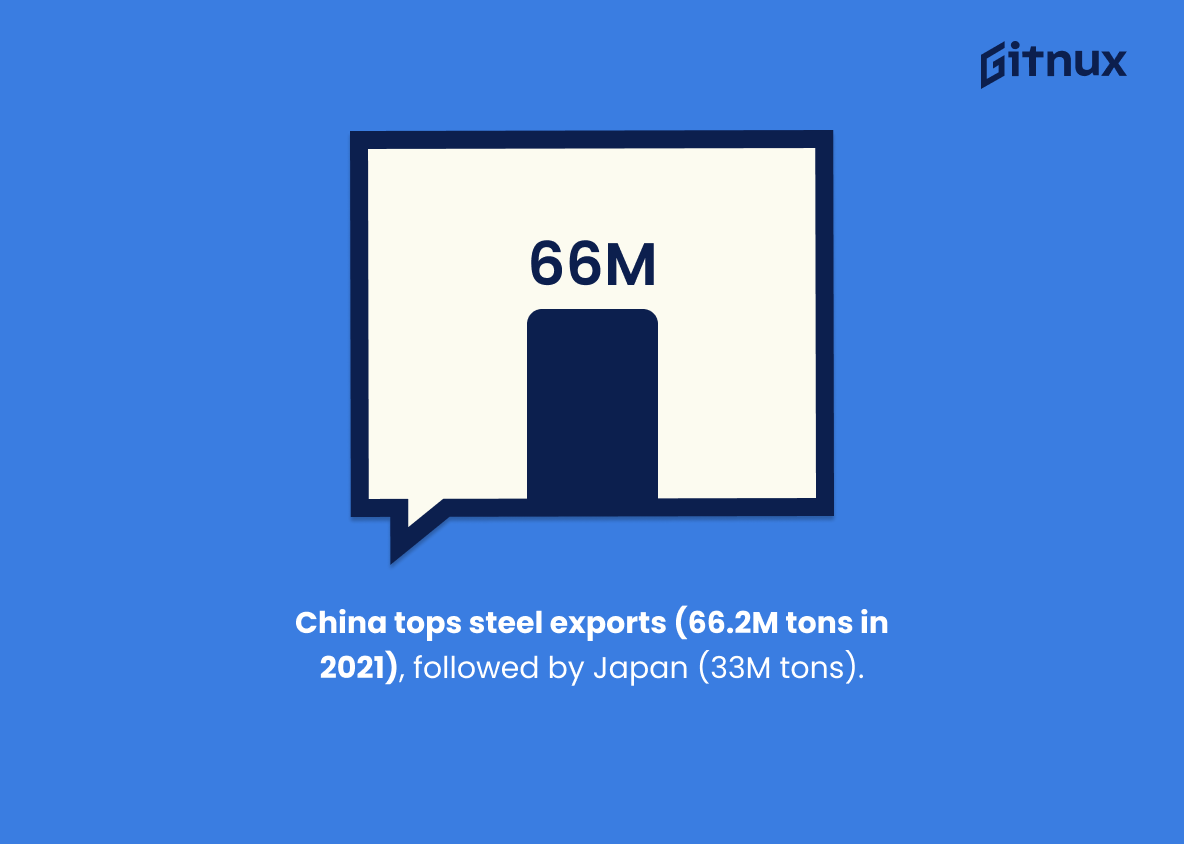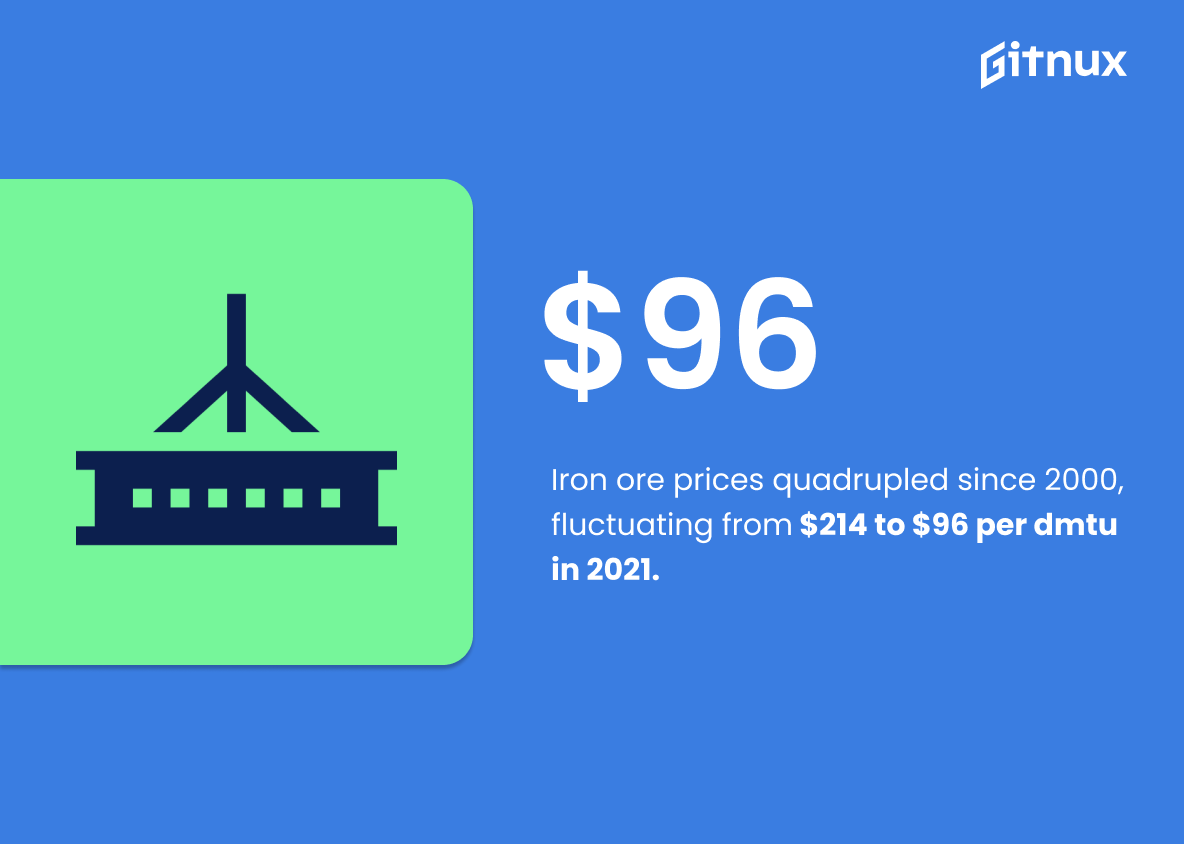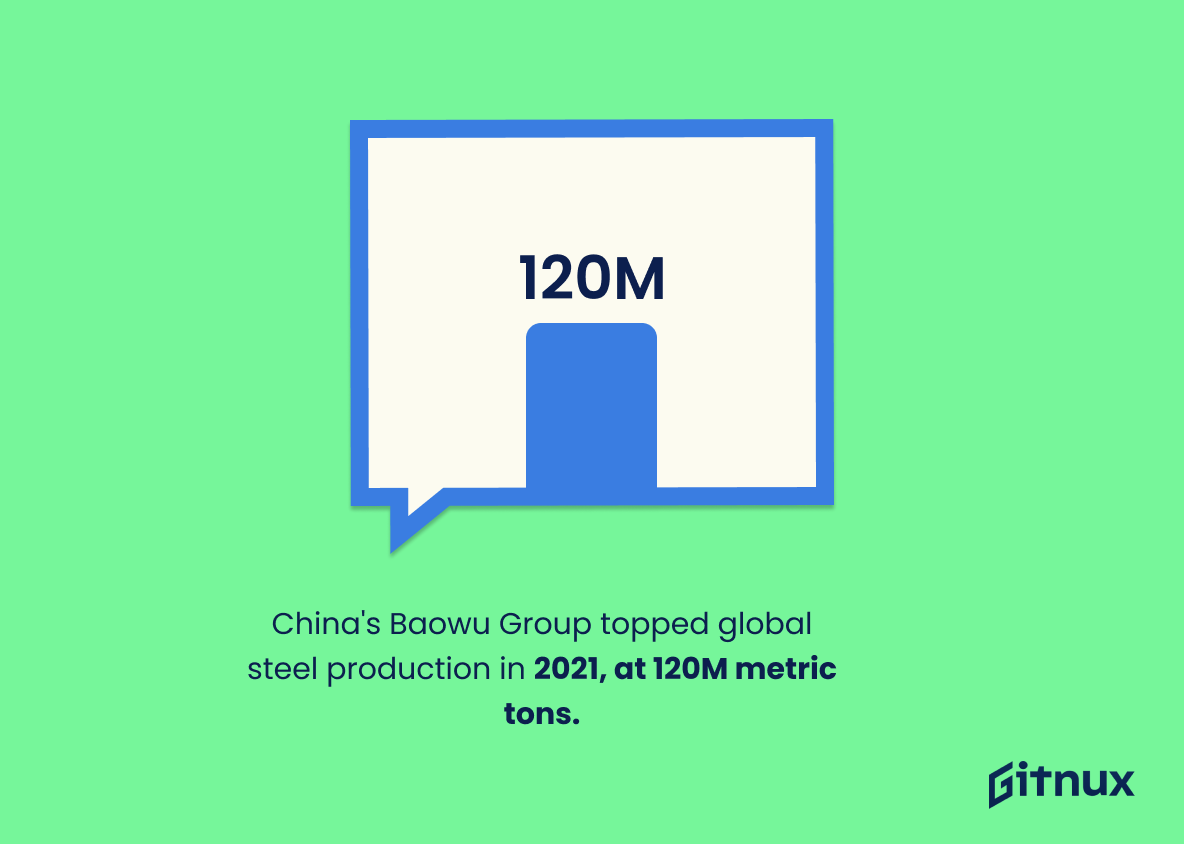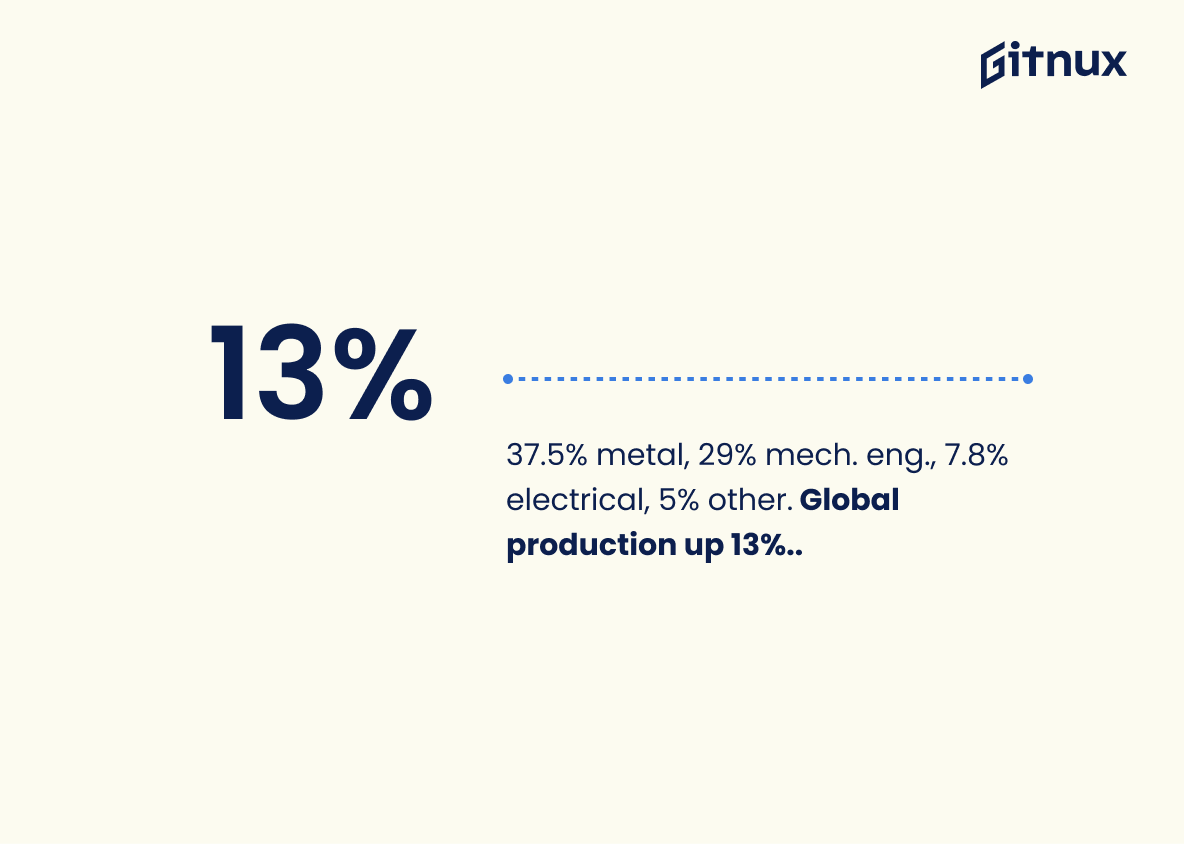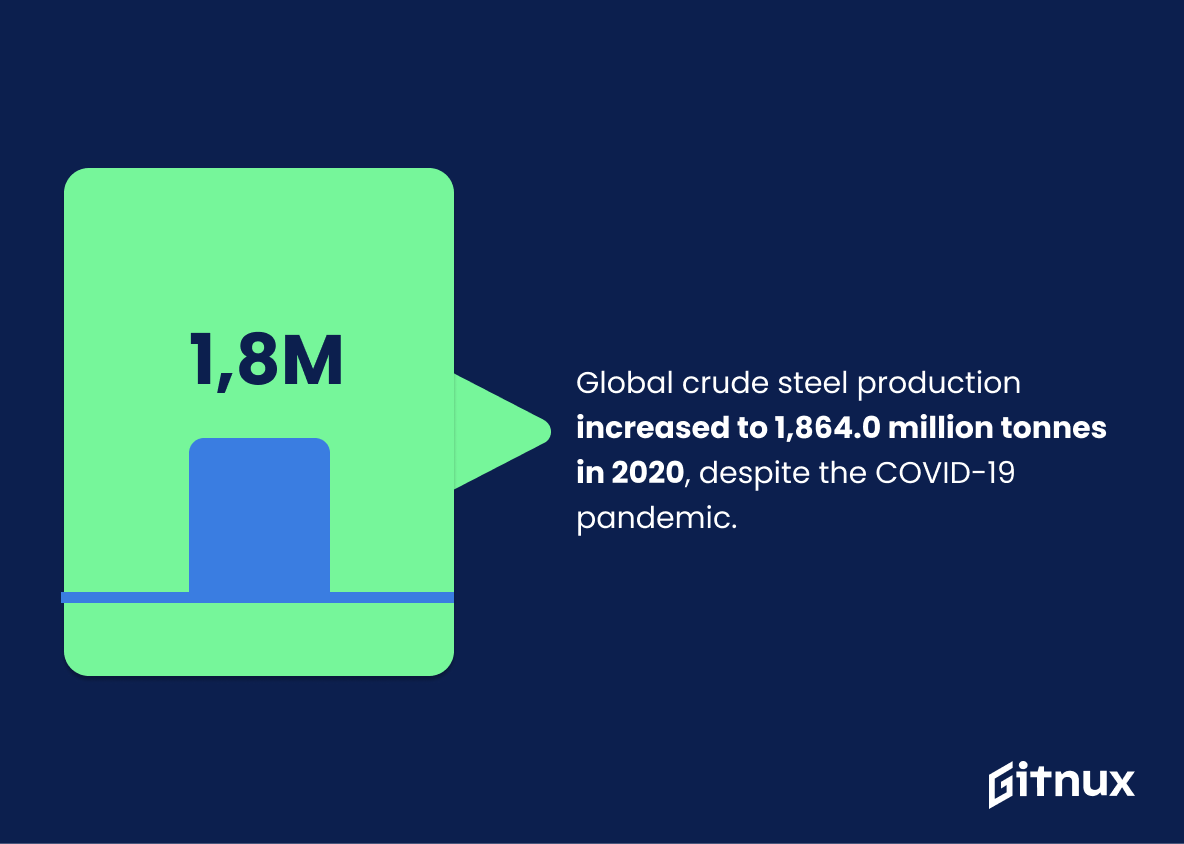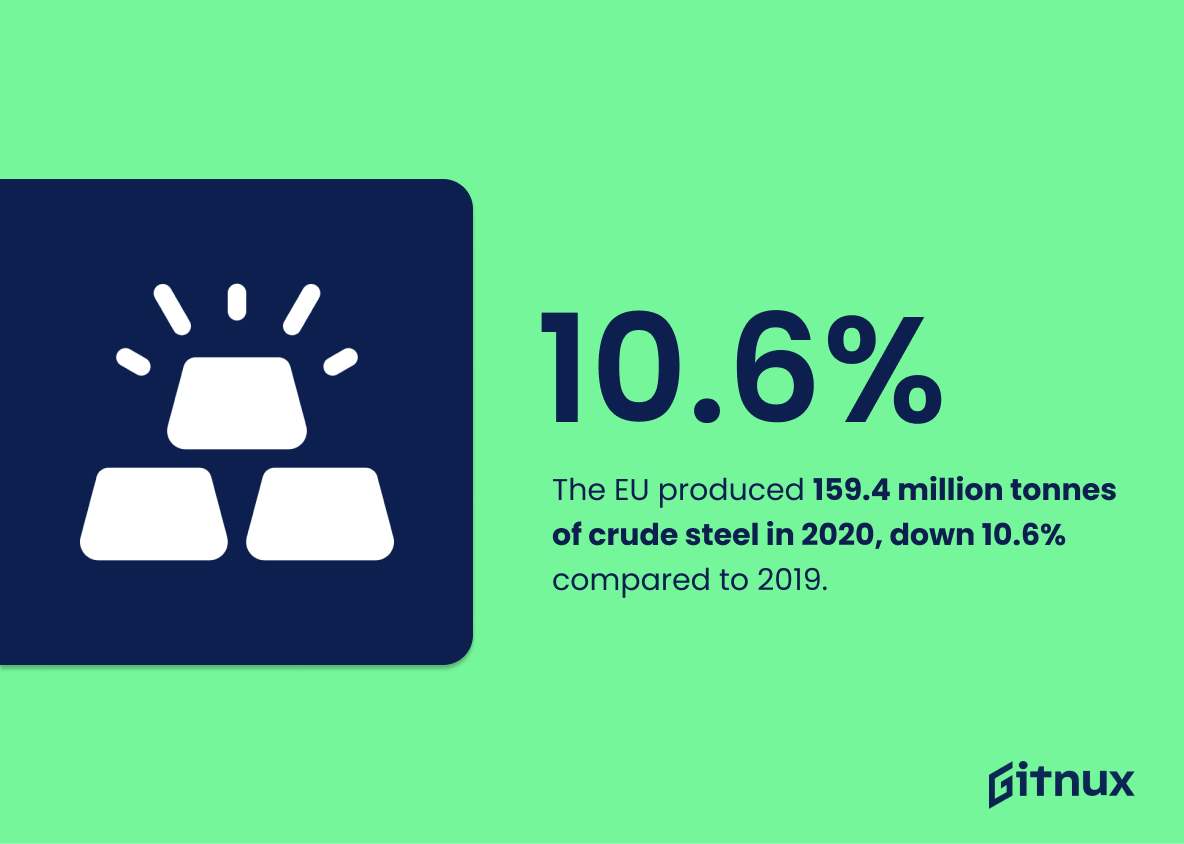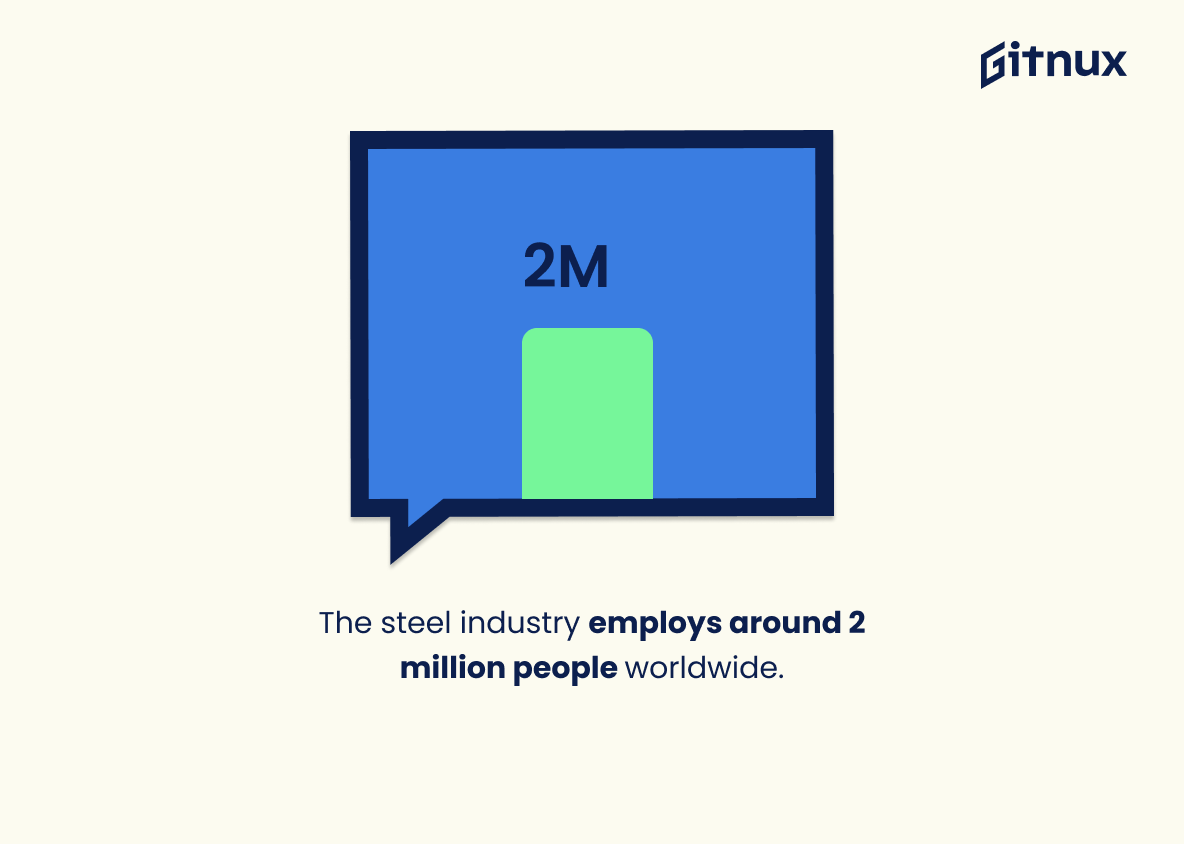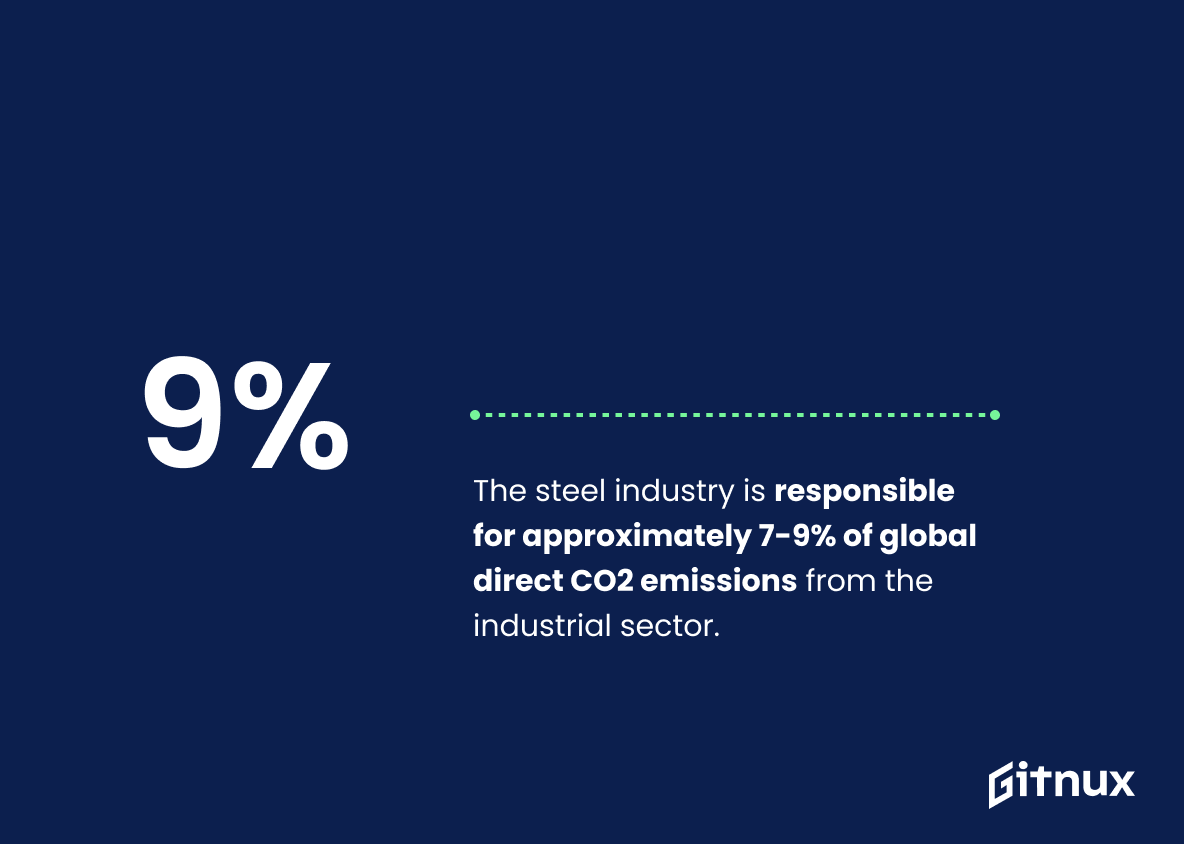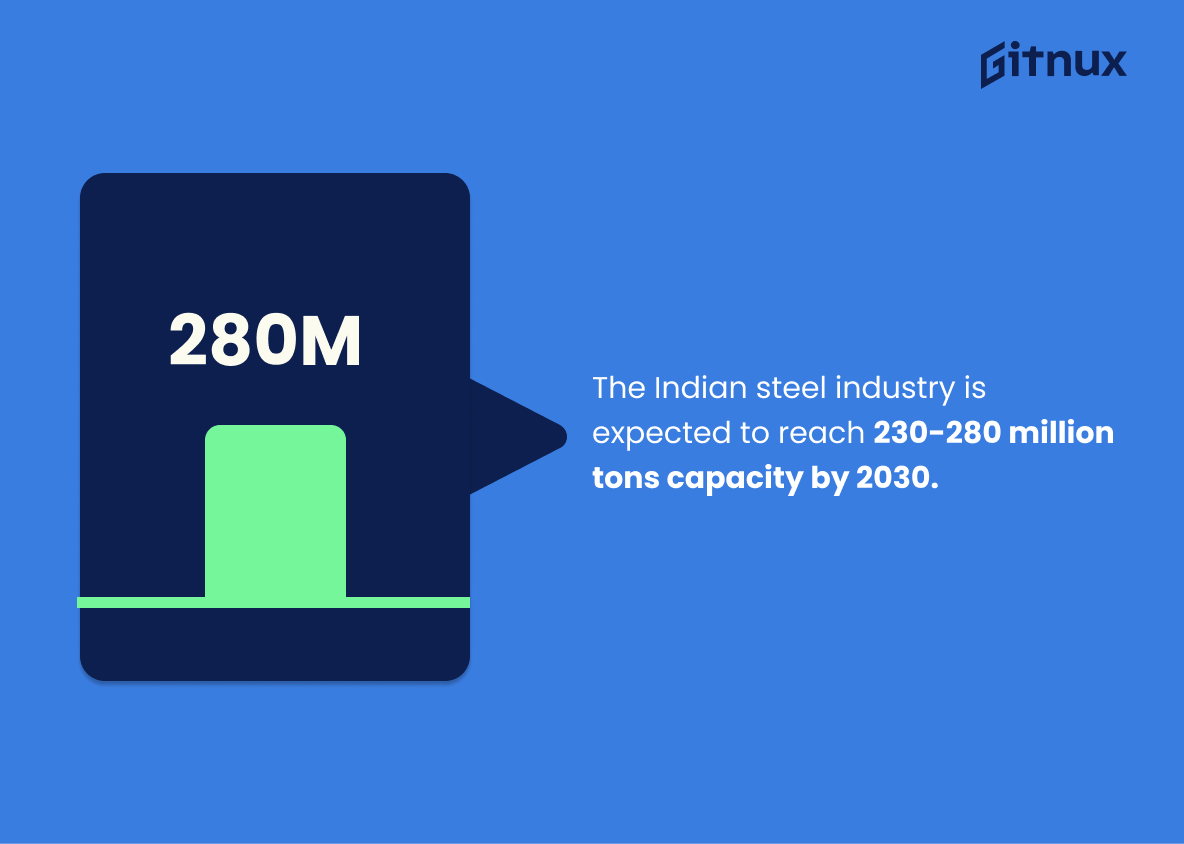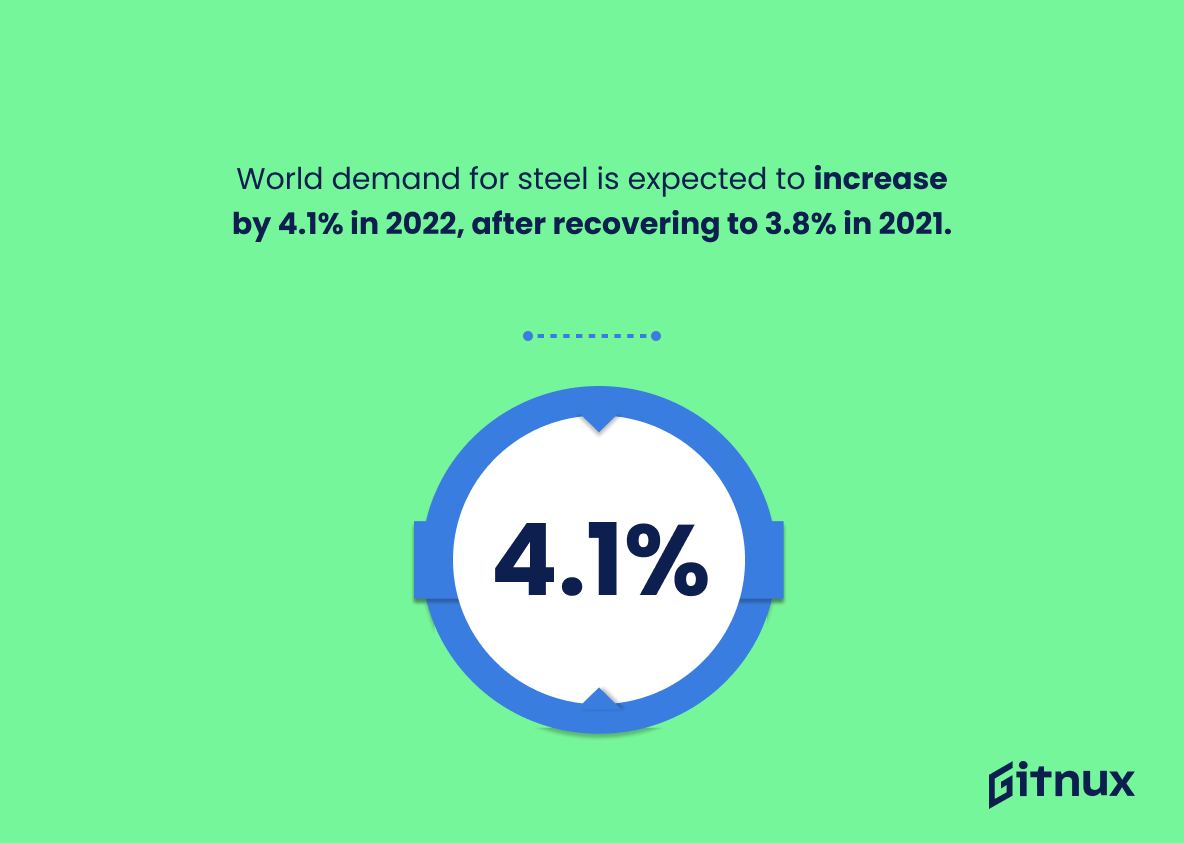The steel industry is an integral part of the global economy. It is a major contributor to the production of goods and services, and its impact on the environment is undeniable. As such, it is important to stay up to date on the latest steel industry statistics.
In this blog post, we will explore the latest steel industry statistics, including production, consumption, imports, exports, and more. We will also discuss the implications of these statistics for the industry and the global economy. Finally, we will discuss the future of the steel industry and how the industry can adapt to changing market conditions.
Steel Industry: The Most Important Statistics
Steel industries have a large impact on air quality, with Ukraine, China, and Russia having the highest emission intensities and the United States, Sweden, Belgium, and Austria having the lowest.
Iron ore prices have increased fourfold since 2000, with monthly fluctuations ranging from a high of 214.43 U.S. dollars per dmtu in June 2021 to a low of 96.24 U.S. dollars per dmtu in November 2021.
Steel Industry Statistics Overview
The United States imported the most steel in 2021, with China and Germany following in second and third place, respectively.
Thus, the US is the leading importer of steel, and the other two countries are not far behind. This is significant for the steel industry as it indicates the demand for steel is high and the industry is thriving.
China is the top steel exporting country, with 66.2 million metric tons exported in 2021, while Japan is the second largest exporter with 33 metric tons.
This shows the dominance of China in the steel industry. It also highlights the importance of China as a major exporter of steel, despite also importing steel.
The steel industry globally emitted 300% more SO2 than the entire EU-27 region in 2019, highlighting the need for more stringent regulations and better emissions control in the steel industry.
Since SO2 is a major air pollutant that can cause respiratory illnesses and other health problems, this is important to know. Also, it can contribute to global warming.
Steel industries have a large impact on air quality, with Ukraine, China, and Russia having the highest emission intensities and the United States, Sweden, Belgium, and Austria having the lowest.
Therefore, there is a big need for stricter regulations and better environmental practices in the steel industry.
Iron ore reserves are estimated to reach 51 billion metric tons in 2022, with 27 billion metric tons of iron content, and Australia and Brazil hold a large portion of these reserves.
This matters for the steel industry as it is highly dependent on iron ore as a raw material.
Iron ore prices have increased fourfold since 2000, with monthly fluctuations ranging from a high of 214.43 U.S. dollars per dmtu in June 2021 to a low of 96.24 U.S. dollars per dmtu in November 2021.
Iron ore is a key component in the production of steel, so fluctuations in its price can have a significant impact on the cost of steel production.
China’s Baowu Group was the world’s largest steel producer in 2021, producing 120 million metric tons of crude steel.
Baowu, a Shanghai-based company, reported revenue of almost 98 billion U.S. dollars in the fiscal year ending March 31, 2021, making it the world’s largest iron and steel company in terms of revenue, surpassing ArcelorMittal’s revenue of just half of Baowu’s.
37.5% of stainless steel went to metal products, 29% to mechanical engineering, 7.8% to electrical machinery, and 5% to other transport in 2021. Additionally, the global stainless steel production increased by 13% in 2021 compared to 2020.
This displays the importance of regional conflict and the US steel production industry, which is not as powerful as other countries. Additionally, it shows the reliance of USMCA countries on imports from Asia and Western Europe, which could be affected by fluctuations in production.
Global crude steel production increased to 1,864.0 million tonnes in 2020, despite the COVID-19 pandemic.
Despite the economic downturn caused by the pandemic, global crude steel production still managed to increase in 2020, demonstrating the industry’s ability to weather the storm. This statistic is a valuable insight into the strength of the steel industry and its potential for growth in the future.
China accounted for 56.5% of global crude steel production in 2020.
It highlights the sheer magnitude of China’s production capabilities and its dominance in the market. This statistic is a testament to the country’s industrial prowess and its ability to produce vast amounts of steel, making it a major player in the industry.
The United States is the fourth-largest crude steel producer, with 72.7 million tonnes in 2020.
The US is a major player in the global steel market, producing a significant amount of steel each year. This is significant because it demonstrates the US’s commitment to the steel industry and its ability to produce a large amount of steel for the global market. Additionally, this statistic is important because it provides insight into the size and scope of the US steel industry, which can be used to inform decisions about investments, production, and other aspects of the industry.
The EU produced 159.4 million tonnes of crude steel in 2020, down 10.6% compared to 2019.
Production has decreased significantly in 2020 compared to the previous year, indicating a decline in the industry. This could be due to a variety of factors, such as decreased demand, increased competition, or a shift in production methods. This statistic is an important piece of information for anyone looking to gain insight into the steel industry in the EU.
The steel industry employs around 2 million people worldwide.
This highlights the sheer number of people whose livelihoods depend on the industry, and the importance of its continued success. It also serves as a reminder of the importance of the industry in providing employment opportunities to millions of people around the world.
The steel industry is responsible for approximately 7-9% of global direct CO2 emissions from the industrial sector.
This highlights the need for the industry to take action to reduce its environmental impact and become more sustainable. It also serves as a call to action for governments and other stakeholders to work together to reduce emissions from the steel industry and create a more sustainable future.
75% of all steel produced is used in construction and infrastructure, making it the largest consumer sector of steel.
This highlights the fact that steel is a vital component in the development of these sectors, and that it is a major factor in the success of these industries. This statistic is a reminder of the importance of steel in the modern world, and how it is essential for the growth and development of our society.
The Indian steel industry is expected to reach 230-280 million tons capacity by 2030.
This speaks to the industry’s ambition to become a major player in the global steel market, and the confidence that the industry has in its ability to reach such a lofty goal. It also serves as a reminder of the importance of the steel industry in India’s economy, and the need for continued investment in the sector to ensure its continued success.
World demand for steel is expected to increase by 4.1% in 2022, after recovering to 3.8% in 2021.
The industry is on the path to recovery after a period of decline. It is a sign that the industry is regaining its footing and is poised to experience growth in the coming years. This is good news for those involved in the steel industry, as it means that they can look forward to increased demand and potential profits.
The United States imported $22.3 billion worth of steel products in 2020.
Despite the economic downturn caused by the pandemic, the US still imported a significant amount of steel products, indicating that the industry is still strong and resilient.
The energy consumption per metric ton of steel produced decreased by 61% between 1960 and 2015.
The industry has made significant strides in reducing its environmental impact over the past 55 years. This is an important achievement, as it demonstrates that the steel industry is taking steps to reduce its carbon footprint and become more energy efficient. This is a positive development for the industry, as it will help to ensure that it remains competitive in the global market.
75%-85% of the iron ore feedstock for steelmaking comes from Australia and Brazil.
This is a reminder that the steel industry is heavily dependent on the availability of iron ore from Australia and Brazil, and any disruption in the supply of these resources could have a significant impact on the industry. Furthermore, it also serves as a reminder of the importance of these two countries in the global steel market, and the need for them to remain reliable suppliers.
The steel industry generates a turnover of about 1 trillion USD, making it about 1.3% of total world GDP.
This highlights the sheer magnitude of the industry’s contribution to the global economy, accounting for a significant portion of the world’s GDP. This statistic is a powerful reminder of the importance of the steel industry and its role in driving economic growth.
The global steel industry experienced a loss of $64.5 billion in 2020.
This highlights the immense losses suffered by the industry, and serves as a reminder of the immense challenges faced by the sector in the face of the pandemic. It is a stark reminder of the need for the industry to adapt and innovate in order to remain competitive in the future.
Steel production from electric arc furnaces saw a more than 10% increase in market share from 2000 to 2020.
The industry is adapting to new technologies and that electric arc furnaces are becoming increasingly popular. This shift in market share is indicative of the industry’s commitment to modernizing and staying competitive in the global market. As such, this statistic is an important indicator of the industry’s progress and its ability to remain relevant in the 21st century.
The steel recycling rate in the United States for 2019 was 83% for structural steel, 68% for automotive, and 80% for appliances.
The industry is making strides in recycling and reusing steel, which is an important part of sustainability. It also demonstrates that the industry is taking steps to reduce its environmental impact, which is a key factor in the success of any industry. This statistic is a great example of how the steel industry is making progress in the right direction.
The global stainless steel market size was valued at $111.4 billion in 2019 and is expected to grow at a Compound Annual Growth Rate (CAGR) of 6.3% from 2020 to 2027.
The market size for stainless steel is already substantial and is expected to grow significantly in the coming years. This suggests that the steel industry is a lucrative and growing sector, and that it is worth investing in. Furthermore, the CAGR of 6.3% indicates that the industry is likely to remain strong and profitable in the long-term. This makes it an attractive option for those looking to invest in the steel industry.
Flat steel products accounted for 80.6% of the worldwide steel market worth in 2020, with a total value of $31.8 billion.
The majority of the steel market’s worth is derived from flat steel products, highlighting their importance in the industry. This statistic is a crucial piece of information for anyone looking to gain a better understanding of the steel industry and its dynamics.
Conclusion
The steel industry is an important part of the global economy and is a key driver of economic growth. Steel is used in a variety of industries, from construction to automotive, and its production and consumption are closely linked to the health of the global economy. The steel industry has experienced significant changes in recent years, with new technologies, new markets, and new regulations all impacting the industry.
Steel industry statistics provide an important insight into the current state of the industry and can help businesses make informed decisions about their operations. With the right data, businesses can make informed decisions about their investments and strategies, and ensure they remain competitive in a rapidly changing industry.
References
1 – https://www.statista.com/statistics/650538/leading-steel-importers-globally-sorted-by-country/
2 – https://www.statista.com/statistics/864128/global-steel-exports-by-country/?locale=en
3 – https://www.globalefficiencyintel.com/air-pollution-from-global-steel-industry
4 – https://www.globalefficiencyintel.com/air-pollution-from-global-steel-industry
5 – https://www.statista.com/statistics/267381/world-reserves-of-iron-ore-by-country/?locale=en
6 – https://www.statista.com/statistics/282830/iron-ore-prices-since-2003/?locale=en
7 – https://www.statista.com/statistics/271979/the-largest-steel-producers-worldwide-ranked-by-production-volume/
8 – https://www.statista.com/statistics/270128/the-largest-steel-companies-worldwide-based-on-revenue/
9 – https://www.statista.com/statistics/1109915/stainless-steel-usage-global-sector/
10 – https://www.statista.com/statistics/223028/world-stainless-steel-production/
11 – https://www.eurofer.eu
12 – https://www.mckinsey.com
13 – https://www.trade.gov
14 – https://www2.deloitte.com
15 – https://markets.businessinsider.com
16 – https://www.grandviewresearch.com
17 – https://www.worldsteel.org
18 – https://www.iiasa.ac.at
19 – https://www.smithers.com
20 – https://www.steel.org
21 – https://www.businesswire.com
22 – https://energystar.gov
